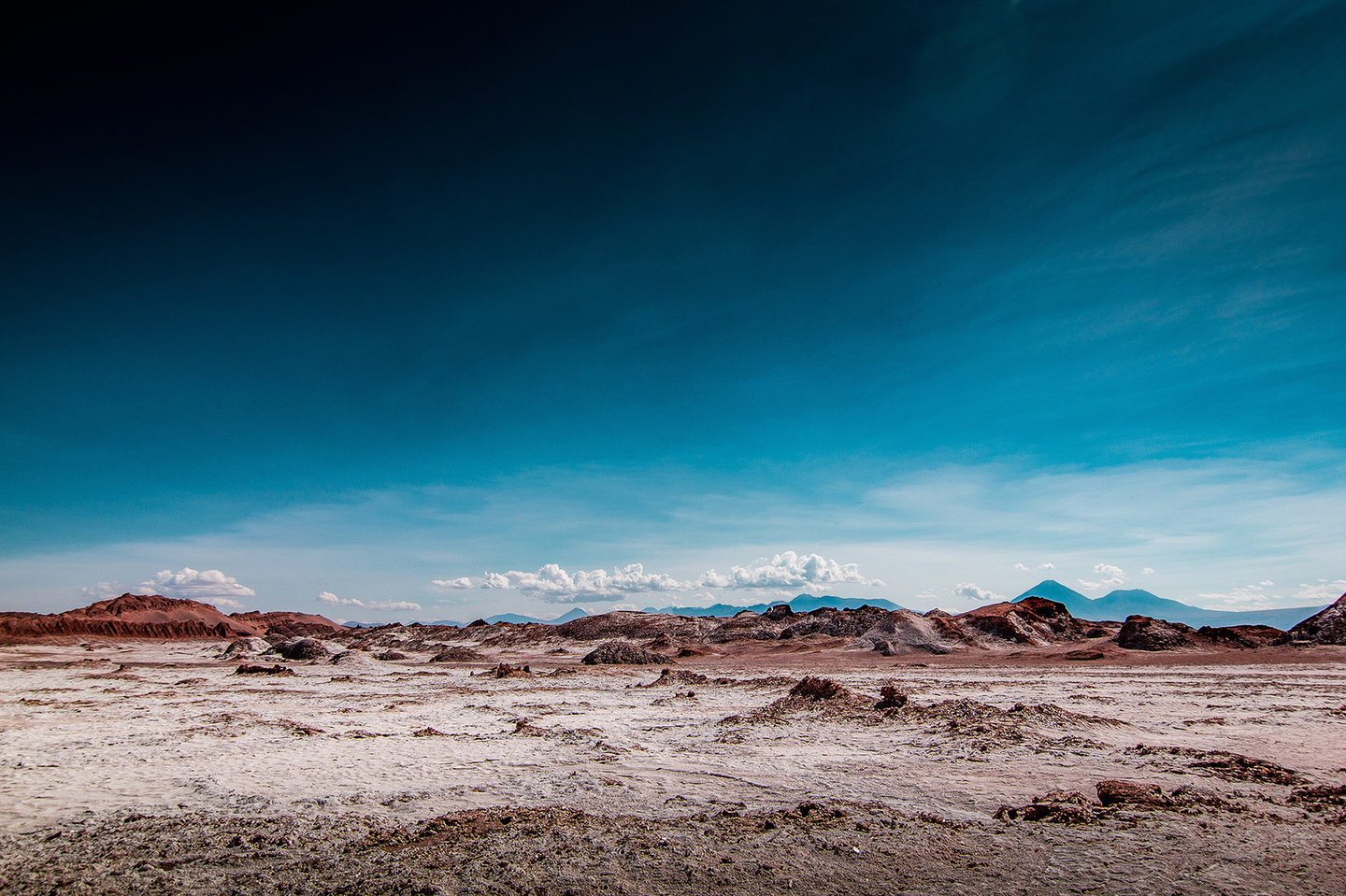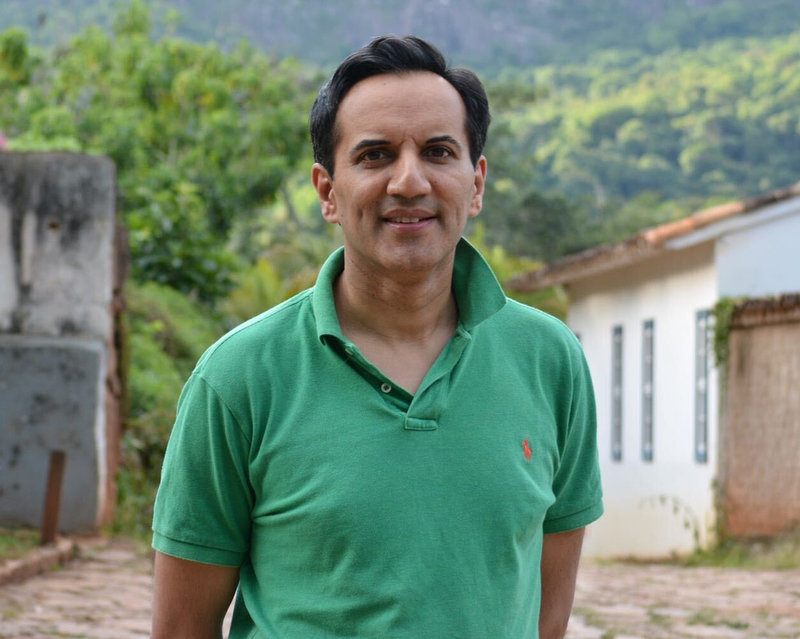
Interview
Decoding climate uncertainty
Extreme weather events are becoming more common, but it’s a risk that many businesses are failing to grasp. Robert Scammell speaks to Cervest CEO and founder Iggy Bassi to learn about his plan to map the climate risk.
It was five in the morning when Iggy Bassi got the call telling him that a $6m mill on his sustainable farm in Ghana, West Africa, had been flattened by strong winds. The locals called the destruction an act of God. That didn’t cut it for Bassi.
“I don't believe in acts of God,” he says. “There’s the science behind it – we just don't understand it.”
Not long after, a flash flood destroyed an entire season’s crops.
“That piqued my interest,” says Bassi, who couldn’t understand why his weather alert systems had failed to give any indication of the coming carnage. “I was really struck by one problem: that we could never get really reliable climate data, event data or weather data.”
He wondered whether artificial intelligence (AI) – specifically machine learning – could help. So, in late 2015, Bassi sold his Gates Foundation-backed sustainable farming business, and looked for a way to easily make sense of the “minefield” of complex climate data.
“I was horrified to find the world’s science stranded in all these silos. Yet it's the biggest problem facing humanity in the next hundred years.”
Bassi faced a complex challenge. From flooding to hurricanes, there are many strains of climate science. All use different types of measurements and scientific approaches, making it impossible to quickly compare and quantify the data to get a sense of the true threat. In other words, comparing rainfall and earthquake risk is like comparing apples and oranges.

Iggy Bassi, CEO of Cervest
Climate change: a mathematical problem
In 2016, Bassi turned to Imperial College London’s then-head of machine learning for its statistics programme, Dr Ben Calderhead, for help. Calderhead told Bassi that “ultimately, this is a mathematical problem”.
To their surprise, no mathematical model capable of bringing together the disparate and fragmented climate data existed. The pair began developing their own machine learning platform for Bassi’s new company: Cervest.
“What we realised [is that] somebody needs to fuse together all these world scientists on a single platform, which meant a huge amount of data engineering. And underpinning that is a huge amount of domain knowledge, particularly around physical sciences,” says Bassi.
I said to myself and to my new investors that climate is an everybody problem.
The London-based startup assembled a team of top scientists, engineers, developers and mathematicians, with Calderhead chief scientific advisor, to help build the platform – known as Earth Science AI.
For two years, Cervest refined Earth Science AI’s algorithms by feeding it agricultural data, such as the climate impact on crops. But as the platform’s algorithm’s improved, Bassi and his team realised they could go further.
“What I said to myself and to my new investors is that climate is an everybody problem,” he says. “Climate’s not just an agricultural problem. And actually, everything we build, we build in a generalisable way that we can apply to multiple sectors.”
Cervest expanded the scope of Earth Science AI from just agriculture to mapping the climate risk of every asset on the planet.
Looking at the whole picture
The platform, which is still under development, uses open-source satellite images and scientific models to look for “climate signals” such as heat risk and flood risk. For assets, Cervest uses open-source data to plot out buildings. Where data is scarce, such as in rural areas, it uses machine learning to fill in the blanks.
The platform’s AI then assesses the impact of these climate signals and plays them out on different timescales – from days, to months, to decades – right down to the granular level of a single building.
It can provide alerts when certain thresholds are met. For example, rainfall patterns can indicate a drought is likely in a factory in the South of France. These risks can then be linked with other factories to warn how a weather event will affect a company’s supply chain.
We need to be fully informed of the uncertainty because there's no perfect prediction in nature.
Rather than looking at one narrow facet of climate, Cervest looks at the whole. A building in Miami might be at risk of floods because of rising sea levels. But what about the increased risk of cyclones from the warming oceans? Like a chain of dominos, climate risk is interconnected.
“This is how you need to think about risk – not through a single lens,” says Bassi. “Our branch of mathematics allows us not to look at individual climate signals by themselves. We look at them as a collective whole and get a unified view of everything that's happening.”
The mathematical model in question is a Bayesian framework (nonparametric Bayesian, to be specific). In short, it allows the model to adapt its probabilities as data changes – even with non-linear data where past patterns don’t always inform future patterns.
Earth Science AI doesn’t make firm predictions. It cannot say with absolute certainty that your house will be hit by a hurricane in three years’ time. What it does is create a stream of probabilities that adapt as data input changes.
“The Bayesian allows us to take all these uncertainties of different sciences and tie them all together mathematically to say, ‘we have x percentage belief that this is going to happen to your asset, but this is the uncertainty that we have as well’,” says Bassi. “We need to be fully informed of the uncertainty because there's no perfect prediction in nature.”
The business model
For businesses looking to spend millions building a new factory in a world increasingly susceptible to the volatility of climate change, having the most up-to-date climate risk could prove incredibly valuable. For a company operating on the scale of Unilever, in 60 countries worldwide, the benefits could be particularly acute.
Investors seem to agree – the company has so far raised more than £4.5m and is close to closing a £5m funding round.
Cervest plans to offer a freemium model for its Earth Science AI platform. This means you or I could access its dashboard for free and see limited climate risk data for locations around the world. But paying customers – consultancy firms, insurers, policy makers – will have access to more granular data and more frequent updates, among other features.
People could start using climate not to interpret all these complicated scientific models, just to use it as a service.
Those requiring a more advanced service, such as insurance companies, will also be able to plug into a Cervest API to pull the climate data into their own systems.
“People could start using climate not to interpret all these complicated scientific models, just to use it as a service,” says Bassi. “It's like a credit rating – you just need the output to support a decision.”
Cervest is close to signing a partnership with one of the “top four large accountancy firms”. Bassi can’t go into detail, but says there’s a “lot of urgency coming from banks, asset managers, insurance companies” to understand climate risk.
Growing call for climate disclosures
In December 2019, then-Bank of England Governor Mark Carney noted that “changes in climate policies, new technologies and growing physical risks will prompt reassessments of the values of virtually every financial asset”.
At the moment, a bank loaning a business millions to build a new factory will take credit score, underlying security and existing assets into account – but rarely climate risk.
However, some banks have now devised disclosure guidelines that factor in climate risk. More than 1,000 companies have signed up to the voluntary standard, published by the Task Force on Climate-related Financial Disclosures. But in the next few years, Bassi anticipates that it will become mandatory – an eventuality likely to be a boon for Cervest.
The coronavirus pandemic has created “a real rush for people to reassess their risk frameworks”, says Bassi, which could see companies become more open to assessing climate risk.
“We can't afford these types of events going forward. It's forcing governments and companies to say: ‘hey, how do we rethink our relationship to other risks?’.”
By the end of the year, Cervest is hoping to tweak the algorithm to be able to make forecasts for three to four decades and to include more climate signals. The startup is aiming to launch a beta version of Earth Science AI in the first quarter of 2021, or the end of 2020 at the earliest.
Just because you switch overnight to clean energy, it doesn't make your assets secure.
Scientists warn that countries need to reduce their carbon emissions to net-zero by 2050 to avoid catastrophic and irreversible damage. There has been progress, but it has been slow. But even if dramatic improvements are made, companies are still at risk.
“Even if we stopped all greenhouse gases tomorrow morning, we have already locked in 30 to 40 years with the physical damage that's already baked in,” says Bassi. “So just because you switch overnight to clean energy, it doesn't make your assets secure. It doesn't give you climate security overnight.”
Ultimately, it could be balance sheets that cause companies to take real action on climate change.
“Financial markets realise every now and then that something blacks out, something goes haywire in somebody's assets,” says Bassi. “There’s a wildfire, there's a storm, there's a flood, there's an extreme weather event. What they're realising is that climate is now impacting their returns.”